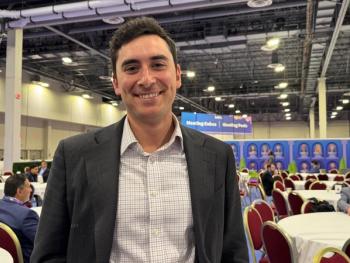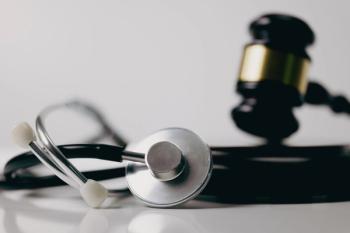
Text messaging system saved the lives of COVID-19 patients, study finds
Penn Medicine’s automated text system prompted more patients to get to the hospital sooner. It could offer more possibilities for monitoring patients with other health issues.
Penn Medicine found an automatic text messaging system designed to keep tabs on COVID-19 patients helped save lives, according to a new study.
The study, appearing on the
During peak weeks of the pandemic, one life was saved every four days, the study found. The study’s authors note the encouraging findings could have applications for people with other health issues.
Penn Medicine, based in Philadelphia, serves patients in southeastern Pennsylvania, New Jersey and Delaware. Early in the pandemic, Penn launched its “COVID Watch” text messaging service with clinical service support available around the clock. The study compared outcomes among those who get the texting service and those who didn’t.
“These findings imply that COVID Watch is associated with a 64% relative reduction in the risk for death and that 1 life was saved for every 400 patients enrolled - or about 1 every 4 days during peak enrollment weeks,” the study’s authors wrote.
Patients in the program get two automated text messages each day. Patients are asked how they are feeling compared to 12 hours ago: better, worse or the same. For those saying they feel worse, patients are asked if they are having more trouble breathing. Those who said they were having more difficulty breathing would be contacted by a clinician within an hour.
During the day, nurses would typically be the ones to respond, while physicians and nurse practitioners would handle calls at night.
The goal was to keep track of sick patients and get them to the hospital quicker, said Krisda H Chaiyachati, a co-primary investigator of the study and the medical director of Penn Medicine OnDemand.
“Our evaluation found that a small team of five or six nurses staffing the program during some of the most hectic days of the pandemic directly saved a life every three to four days,” Chaiyachati said in a Penn Medicine news release.
The study evaluated outcomes for those who tested positive for COVID-19 from March 23, 2020 through November 30, 2020. Among those studied 30 days after infection, 3 out of 3,488 patients (0.09%) in COVID Watch died, compared to 12 of 4,377 patients (0.27%) who received usual care and did not get the texting service.
None of the COVID Watch patients died outside the hospital, while 6 deaths among patients who didn’t get the text service died outside the hospital.
Those in minority groups also were less likely to die. The study found white, Black and Hispanic patients who received the texting service all had reduced mortality rates.
M. Kit Delgado, the study’s lead author, said the improved outcomes among minority groups was encouraging. Delgado noted that a higher proportion of Black patients and patients with lower incomes enrolled in the texting program.
“We saw a higher proportion of higher-risk patients and also low-income and Black patients enrolled in COVID Watch, but the fact that we measured a significant benefit associated with enrollment in the program is a good indicator that there truly is a treatment benefit for everyone,” Delgado said in a Penn Medicine news release.
“It’s crucial that we found all major racial and ethnic groups benefited because non-white and low-income communities have had disproportionately higher infection rates, lower access to care, and higher death rates,” Delgado said. “This implies that this model of care could have reduced disparities in COVID outcomes if it was scaled up more broadly to these communities.”
Within 30 days, those enrolled in the text messaging program were more than twice as likely to visit the emergency department compared to those who received the usual care, the study found. The COVID Watch patients were also likely to go to the emergency room sooner than other patients (6.1 days compared to 9 days).
The system was initially designed to track patients with chronic obstructive pulmonary diseases. Penn Medicine’s COVID Watch team plans to see if the texting service could be used to help monitor people with other health conditions.








































